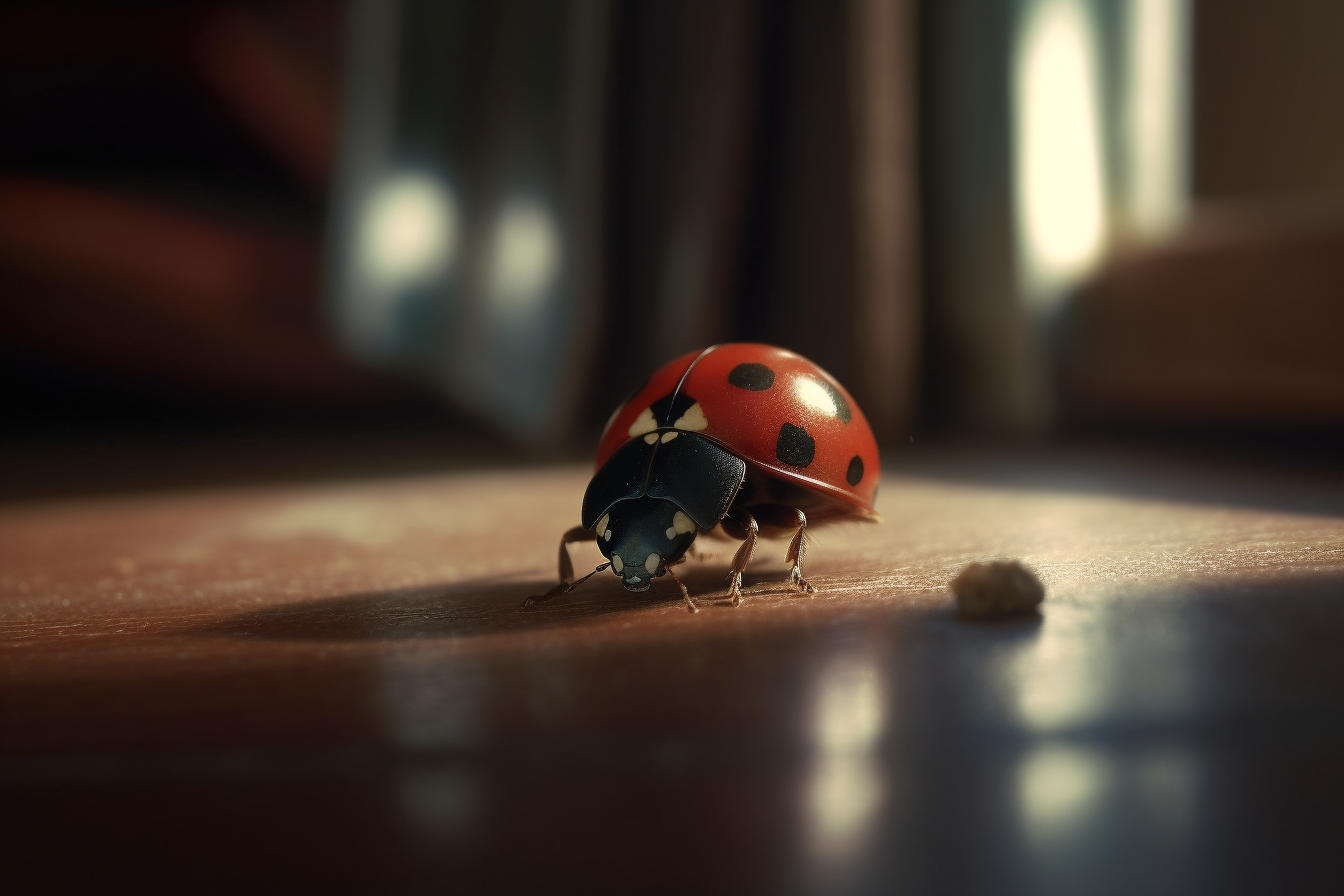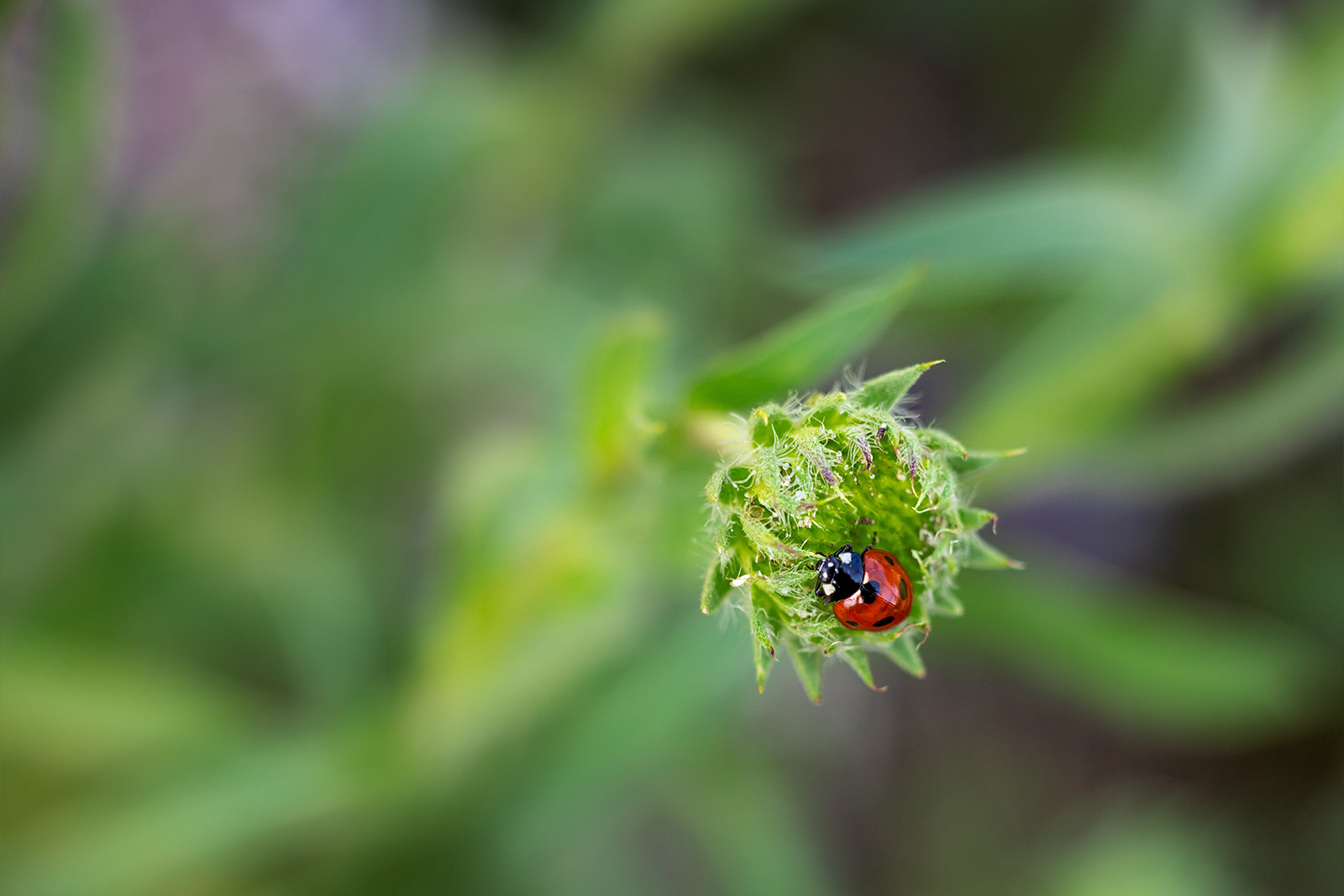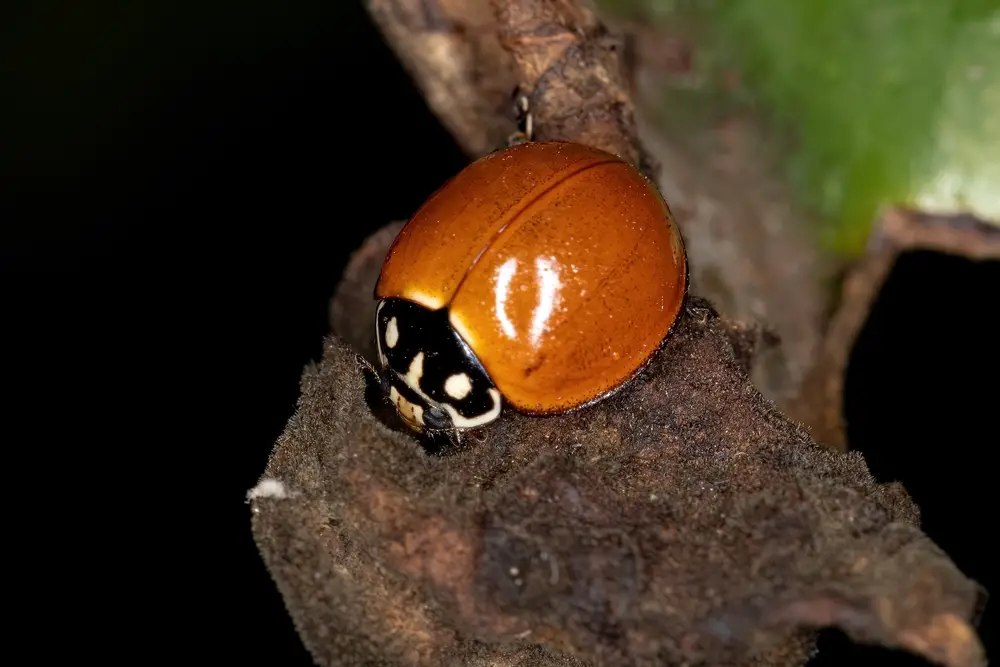
As a homeowner, I’ve often wondered what attracts ladybugs to my house. Ladybugs are generally considered to be beneficial insects, as they help control pest populations in our gardens. However, having them indoors can be a nuisance and it’s important to understand what draws them inside in the first place.
Ladybugs are attracted to the warmth and safety of our homes, seeking sheltered spots for nesting, similar to how they would gather inside tree trunks or beneath large rocks. They often find their way inside through windows, doors, basements, or drainage pipes, and tend to congregate in corners or near windows for optimal warmth and light.
Furthermore, ladybugs release pheromones, which are scented chemical signals that attract other ladybugs in the area. These pheromones create a trail, guiding more ladybugs into our homes via the same paths used by the first invaders. In addition to warmth and safety, ladybugs are also drawn to light-colored homes and surfaces, especially those located near fields or wooded areas.
Why Ladybugs Enter Houses
Seasonal Changes
When autumn arrives and temperatures start to drop, I have noticed that ladybugs often seek shelter to overwinter. To survive the cold season, they need a warm and dry place, making our homes perfect for this purpose. These insects find their way inside through small cracks, crevices, and other openings in the exterior of the house (Southern Living).
Seeking Food Sources
Another reason I find ladybugs inside my house is that they’re in search of food. Although ladybugs primarily feed on aphids, mites, and other small insects, they can also be attracted to the food leftovers in our homes. They are more likely to enter houses located near fields or woods where their primary food sources are abundant.
Factors Influencing Attraction
Certain characteristics of your home can increase the probability of ladybugs seeking shelter inside. For instance, they are more attracted to light-colored houses and illuminated surfaces (Pest Pointers).
Additionally, the heat that our houses produce is a major factor that lures ladybugs. These factors, combined with the availability of small entry points, make our homes an ideal haven for ladybugs during the cooler months.
Common Attractions for Ladybugs
Colors and Surfaces
One characteristic of our homes that can attract ladybugs is the color of the house and the type of exterior surface it has. Ladybugs are particularly drawn to light-colored homes and dwellings near fields or woods. Also, they tend to congregate in large numbers on the outside of buildings, especially southwestern facing areas where the afternoon sun is strong and warm (The Spruce).
Light Sources
Another aspect that attracts ladybugs is light. These harmless insects are often irresistibly drawn to illuminated surfaces. Once inside ladybugs often accumulate in window sills, where they are attracted to the warmth and light of the sun.
Indoor Plants
While I observed ladybugs being attracted to colors, surfaces and light sources, I also found out that certain indoor plants can draw them inside our homes. For example, planting marigolds, dahlias, daisies, asters, cosmos, Calendula, Coreopsis, tansies, yarrows, Zinnia, or sunflowers in our gardens can be attractive to ladybugs. Although these plants are beneficial in attracting these little insects to the garden for natural pest control, it’s important to be mindful that they might inadvertently invite them into our homes as well.

Preventing Ladybug Infestation
As much as I love ladybugs, having them inside my house can be a bit of a problem. To prevent ladybug infestations I focus on three main strategies: Sealing Entry Points, Proper Sanitation, and Natural Repellents.
Sealing Entry Points
One effective way to prevent ladybugs from entering your home is to seal any gaps or cracks they might use to sneak in. Ladybugs tend to find their way indoors through windows, doors, and other crevices, especially during the colder months when they search for a warm and safe place to stay.
Make sure to inspect your home for any potential entry points and fill them with the appropriate materials, such as metal mesh or concrete filler. Additionally, ensure that your windows and door frames are tightly sealed, preventing ladybugs from squeezing through.
Proper Sanitation
Keeping your home clean and well-maintained plays a crucial role in preventing ladybug infestation. Pay special attention to areas with clutter or organic materials, as these can be attractive to ladybugs and other pests. By maintaining a clean and organized living space, you will discourage ladybugs from establishing in your house.
Natural Repellents
I prefer to use natural repellents to deter ladybugs, as they are safe for my family and the environment. One such repellent is a blend of essential oils, like citronella, eucalyptus, or peppermint, which can be applied to areas where ladybugs tend to gather. I mix a few drops of the oil with water in a spray bottle and apply it to window sills, door frames, and other entry points. It’s harmless, and just disincentivizes curious beetles from coming inside.
Using these strategies, I can effectively prevent ladybug infestations and keep these charming creatures outdoors where they belong.
Safely Removing Ladybugs
As a fellow bug lover, I’m sure you understand the need to remove errant ladybugs without causing harm. In this section, I’ll discuss a few gentle capture methods and how to relocate them back outdoors.
Gentle Capture Methods
When ladybugs find their way into my home my preferred method for collecting them is by using a vacuum cleaner. I find that this method is not only effective but also safe for the ladybugs. I simply attach a soft brush to the vacuum hose and gently nudge the ladybugs onto the brush. The ladybugs are then sucked up into the vacuum, which can be taken outside for their release. Southern Living also recommends this method for collecting both live and expired ladybugs.
That said, the capture method I most prefer is using a piece of paper or a thin, flat object to gently scoop the ladybugs up. This way just seems nicer, but it’s often only useful when dealing with small quantities of ladybugs or when they are located in tight spaces.
Relocating Ladybugs Outdoors
Once I have collected the ladybugs it’s time to release them. I prefer to relocate them to a sheltered location, such as under a bush or near a pile of leaves, where they can find protection from the elements. According to Pest Pointers, ladybugs are particularly attracted to dwellings near fields or woods, so I aim to find an area that mimics their natural habitat.
It’s important to remember that ladybugs are beneficial insects that help control pesky pests like aphids in our gardens. Be kind to them, and they’ll be kind to us!
Conclusion
Ladybugs are drawn to our homes for various reasons. One primary reason is to find a warm and safe shelter for overwintering, as our cozy homes provide an ideal environment for them to wait out the cold season.
Moreover, ladybugs are attracted to light-colored homes, illuminated surfaces, and houses near fields or woods. They manage to enter our homes through small crevices, windows, doors, and drainage pipes.
Scent plays a significant role in attracting ladybugs to our homes. They have a strong sense of smell and can be drawn to specific scents in large numbers.
Lastly, it’s important to note that ladybugs are not harmful to humans, and their presence can be beneficial as they feed on pests in our gardens. To manage their population inside our homes, gently scooping them up to deposit outside (or using the vacuum if you must) and sealing up their entry points are effective solutions.
Driven by a passion for those tiny creatures that rule our world, we at Bug Domain strive to be your go-to resource for information on insects.




